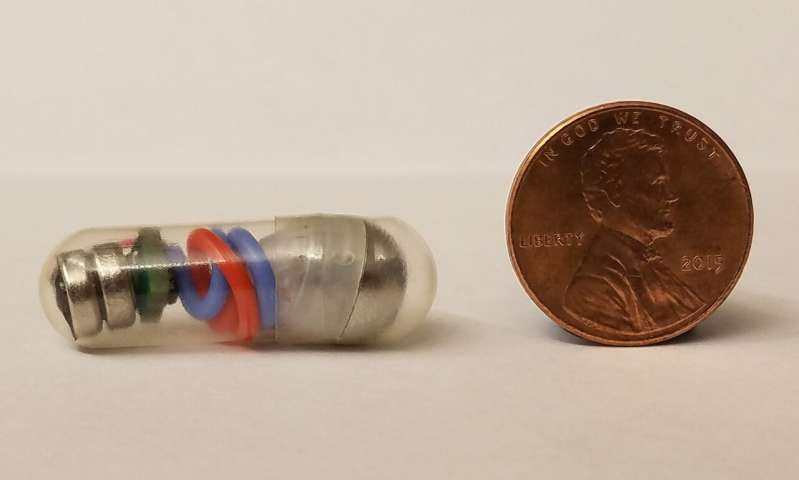
An international team of researchers has created an ingestible device that affixes itself to the stomach wall and treats ailments by delivering electrical pulses. In their paper published in the journal Science Advances, the group describes problems with current devices used to treat certain stomach ailments and how they overcame them to develop a device that they believe will help treat a wide variety of stomach and bowel problems.
Over the past several decades, medical scientists have learned that the gastrointestinal tract does a lot more than just digest our food—it is also involved in chemical processes that regulate critical parts of day-to-day living. There is even some evidence that problems in the gut could be behind such conditions as Alzheimer’s, Hirschsprung’s and Parkinson’s. Because of that, scientists have been working to cure or treat conditions that disrupt the GI process, many of which are antagonistic to stomach digestion by interfering with the contraction process—a critical part of breakdown. Unfortunately, treating such conditions has proven to be problematic. The current approach involves surgery to implant devices that send electrical pulses to the stomach wall, inciting them to contract. Surgery on the stomach is considered risky, however, which has led to efforts aimed at surgery-free solutions. In this new effort, the researchers say they have developed an ingestible capsule that latches onto the stomach wall and emits electrical signals.
The new device is slightly larger than medicinal capsules, but it has three properties that allow it to adhere properly to the stomach wall. The first is a bottom weight to ensure that it will be situated right side up when it reaches the stomach. The second is its shape overall; the team designed it to conform to the shape of the wall of the stomach. The final property involves a payload of sharp, tiny hooks modeled on those of a tapeworm. They allow the device to grab hold of the stomach and to stay in place as digestion takes place. Play00:0000:04MuteSettingsPIPEnter fullscreen
Thus far, the device has worked as intended in test pigs. The researchers plan to continue their work by ensuring it does not produce unwanted side effects in humans.
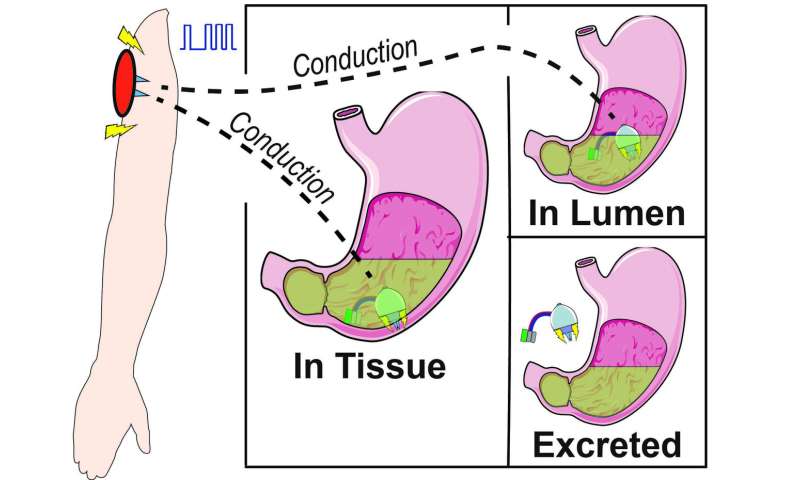 Capsule schematic and timeline. Credit: Alex Abramson
Capsule schematic and timeline. Credit: Alex Abramson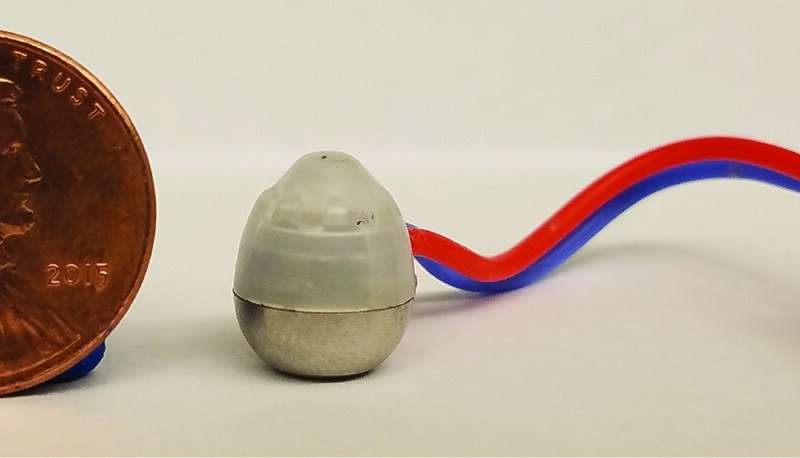 STIMS Capsule. Credit: Alex Abramson
STIMS Capsule. Credit: Alex Abramson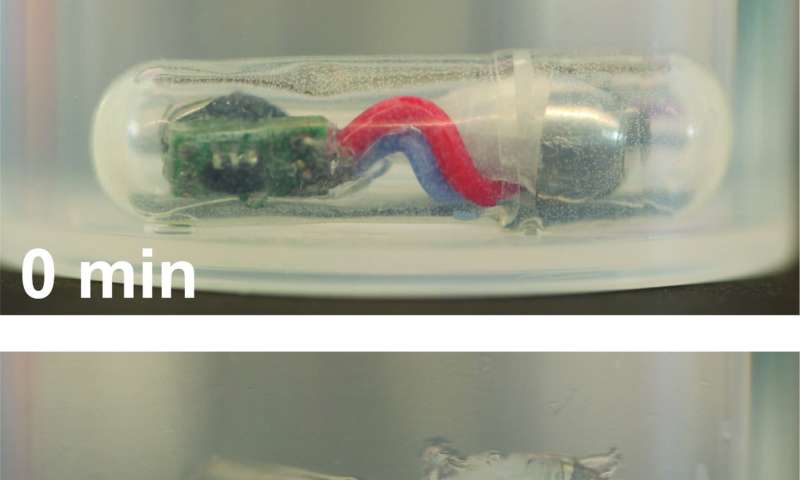 STIMS self-orients after exiting capsule. Credit: Alex Abramson
STIMS self-orients after exiting capsule. Credit: Alex Abramson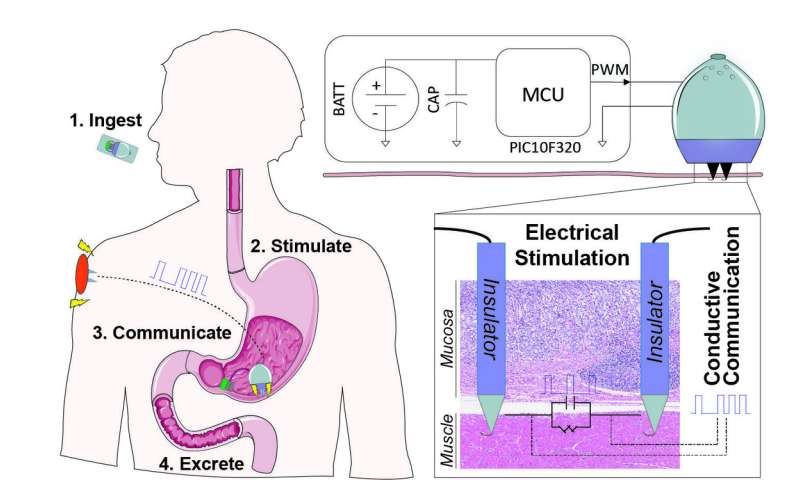 Capsule schematic and timeline. Credit: Alex Abramson
Capsule schematic and timeline. Credit: Alex Abramson Capsule schematic and timeline. Credit: Alex Abramson
Capsule schematic and timeline. Credit: Alex Abramson STIMS Capsule. Credit: Alex Abramson
STIMS Capsule. Credit: Alex Abramson
Bob Yirka , Medical Xpress

